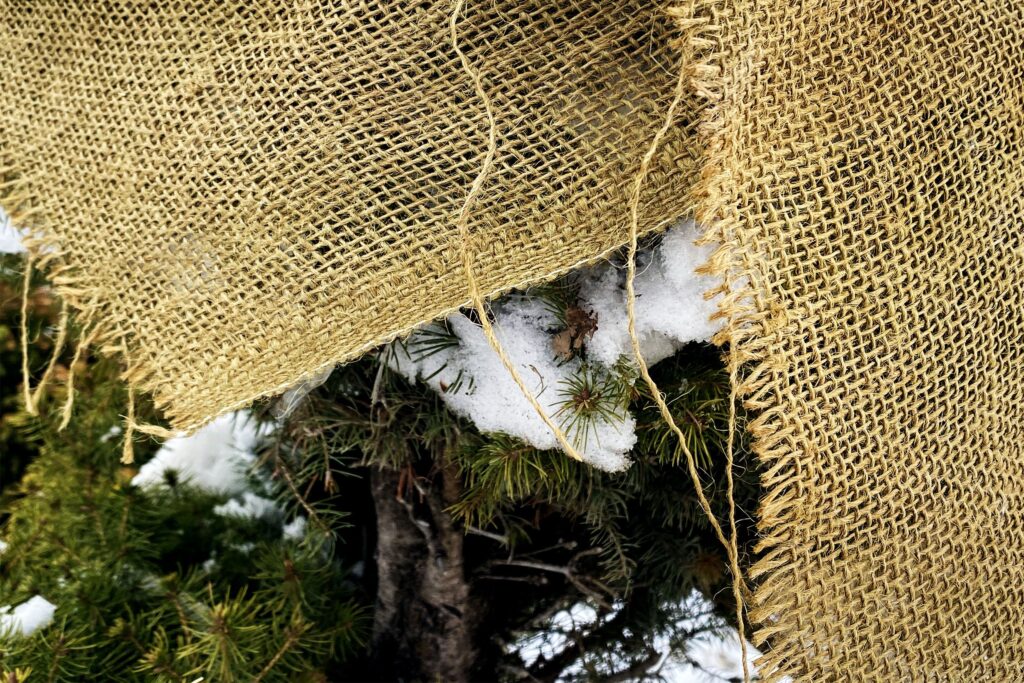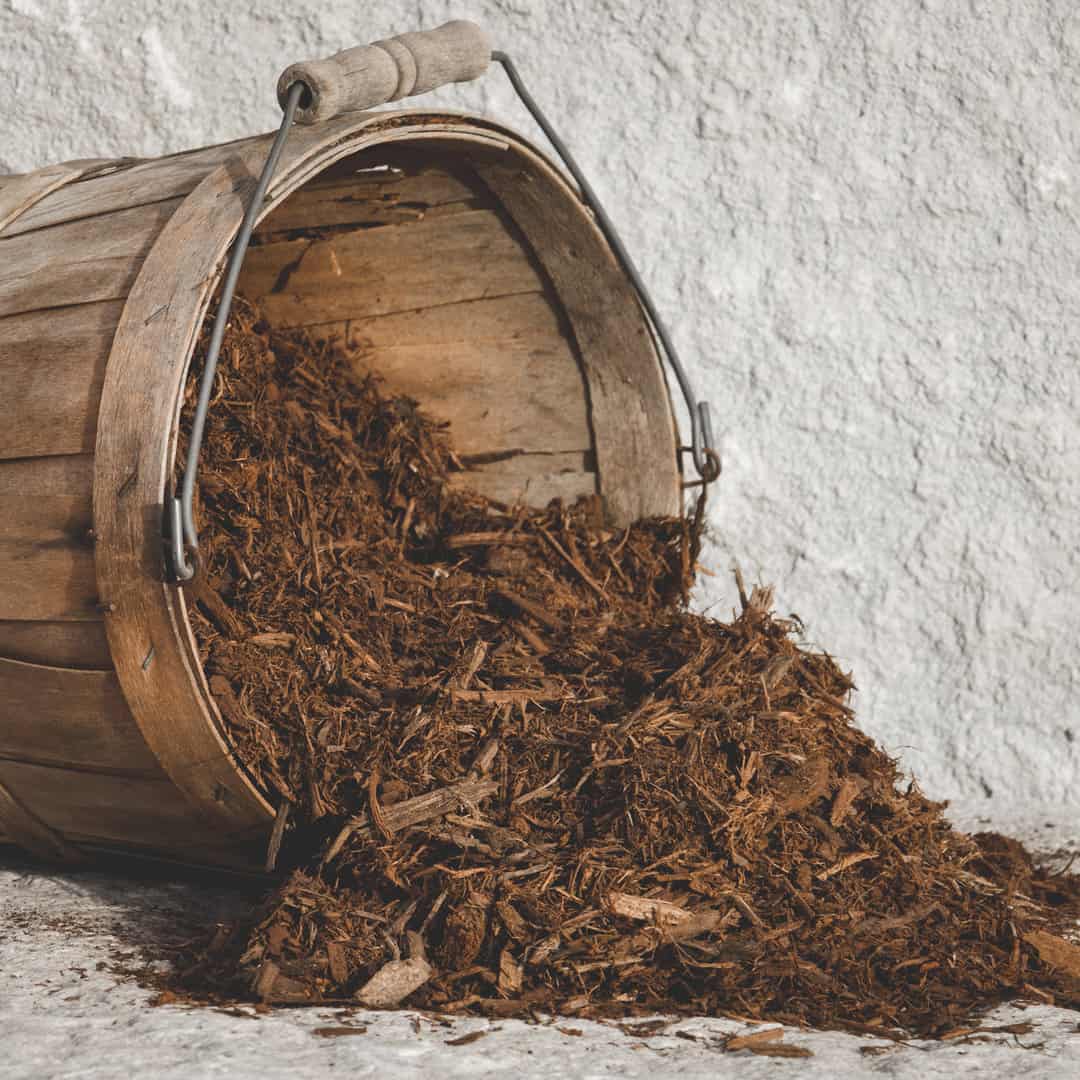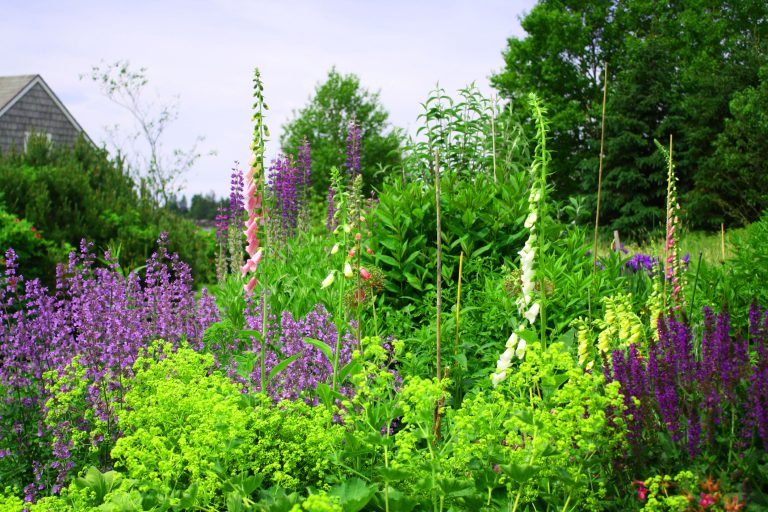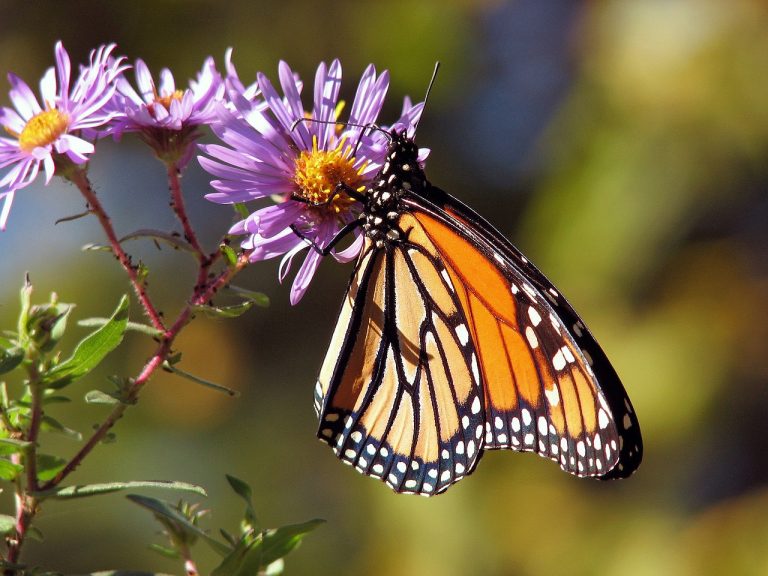

Well established evergreen trees and shrubs are meant to last through the winter without any problems. If they weren’t built for the cold, then the iconic winter imagery of a snowy forest wouldn’t make any sense. A well established tree or shrub should have no problems surviving a normative winter year, but for those newly planted evergreens that have yet to establish mature root systems or still need to acclimate to their new planting location, a little help may be needed.
As explained in the book Landscaping for Dummies (1999), “stretch a section of burlap around four stakes to protect young plants from the south, west, and windward exposures. A wrap of burlap with the stakes can offer protection to plants against drying from sun and wind, and drift from de-icing salts applied to drives and streets. Wrap the ‘body’ of the evergreens, but don’t cover the top of the plant because some light is necessary, even during winter.”
Again, your mature evergreens should be able to withstand most of the winter without intervention. Your new plantings are going to be where you should focus on. If you have a newly planted evergreen, especially if that tree or shrub wasn’t fully grown when you planted it, consider wrapping the evergreen in a few layers of burlap, or constructing a wind shield with wooden stakes and burlap.
Burlap has the added benefit of protecting against sunscald. Continuing from Landscaping for Dummies (1999), sunscalding “occurs when the sun heats tree bark during the day and then the bark rapidly cools after the sunset. These abrupt fluctuations are most common on south and southwest sides of trunks and branches, and they may kill the inner bark in those areas. Young and/or thin-barked trees are most susceptible to winter sunscald.”
Whispering Hills Garden and Landscape Center is a full service landscape center and nursery located in Cary, Illinois. Stop in today to schedule a Spring 2022 cleanup. (Updated: 1/12/22)
Shop Archive



In an era where sustainability is more than a buzzword, Whispering Hills Garden Center

June is National Pollinator Month, a perfect time to celebrate the essential role pollinators